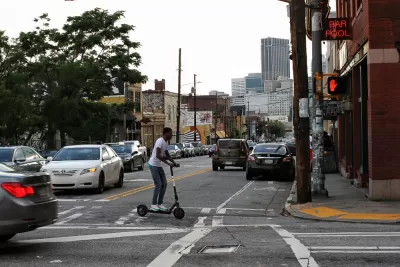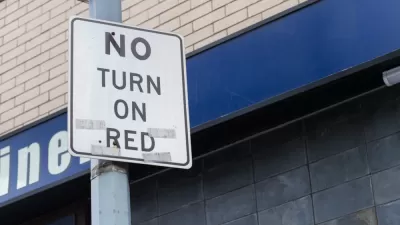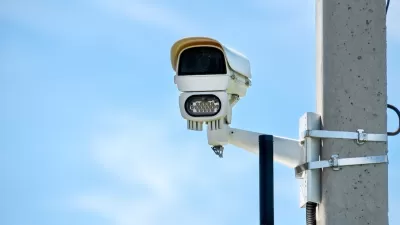Vision Zero arrives in one of the country's most car-centric big cities.

"Atlanta’s local roads now have a default speed limit of 25 miles per hour after the City Council formally adopted the Vision Zero plan on April 20, which focuses on eliminating traffic deaths and reducing crashes and serious injuries," according to an article published by Atlanta Intown.
"The default speed limit applies to any city road without another speed limit expressly posted," according to the article.
The new speed limits are the key component of a Vision Zero plan now approved by the Atlanta City Council. A separate article by David Ederer calls on the city to go beyond the posted speed limits to improve traffic safety in the city, tackling the tougher problem of the design and engineering decisions that enable drivers to choose unsafe speeds in the first place.
Atlanta, while late to the Vision Zero movement, could lead by explicitly designating people walking or rolling as their design user. For too long, Atlanta has prioritized convenience over safety in its transportation system. By beginning with the principle that it will design a transportation system with the most vulnerable as its key users, Atlanta will start on a path to an effective Vision Zero program.
Atlanta Journal-Constitution columnist Bill Torpy is the sole voice from that publication to discuss the new speed limits, in case anyone wants to read barely concealed, car-centric skepticism about the decision.
FULL STORY: Default speed limit lowered to 25 mph on Atlanta roads as part of Vision Zero plan

Trump Administration Could Effectively End Housing Voucher Program
Federal officials are eyeing major cuts to the Section 8 program that helps millions of low-income households pay rent.

Planetizen Federal Action Tracker
A weekly monitor of how Trump’s orders and actions are impacting planners and planning in America.

Ken Jennings Launches Transit Web Series
The Jeopardy champ wants you to ride public transit.

Washington Legislature Passes Rent Increase Cap
A bill that caps rent increases at 7 percent plus inflation is headed to the governor’s desk.

From Planning to Action: How LA County Is Rethinking Climate Resilience
Chief Sustainability Officer Rita Kampalath outlines the County’s shift from planning to implementation in its climate resilience efforts, emphasizing cross-departmental coordination, updated recovery strategies, and the need for flexible funding.

New Mexico Aging Department Commits to Helping Seniors Age ‘In Place’ and ‘Autonomously’ in New Draft Plan
As New Mexico’s population of seniors continues to grow, the state’s aging department is proposing expanded initiatives to help seniors maintain their autonomy while also supporting family caregivers.
Urban Design for Planners 1: Software Tools
This six-course series explores essential urban design concepts using open source software and equips planners with the tools they need to participate fully in the urban design process.
Planning for Universal Design
Learn the tools for implementing Universal Design in planning regulations.
Heyer Gruel & Associates PA
Ada County Highway District
Institute for Housing and Urban Development Studies (IHS)
City of Grandview
Harvard GSD Executive Education
Toledo-Lucas County Plan Commissions
Salt Lake City
NYU Wagner Graduate School of Public Service





























